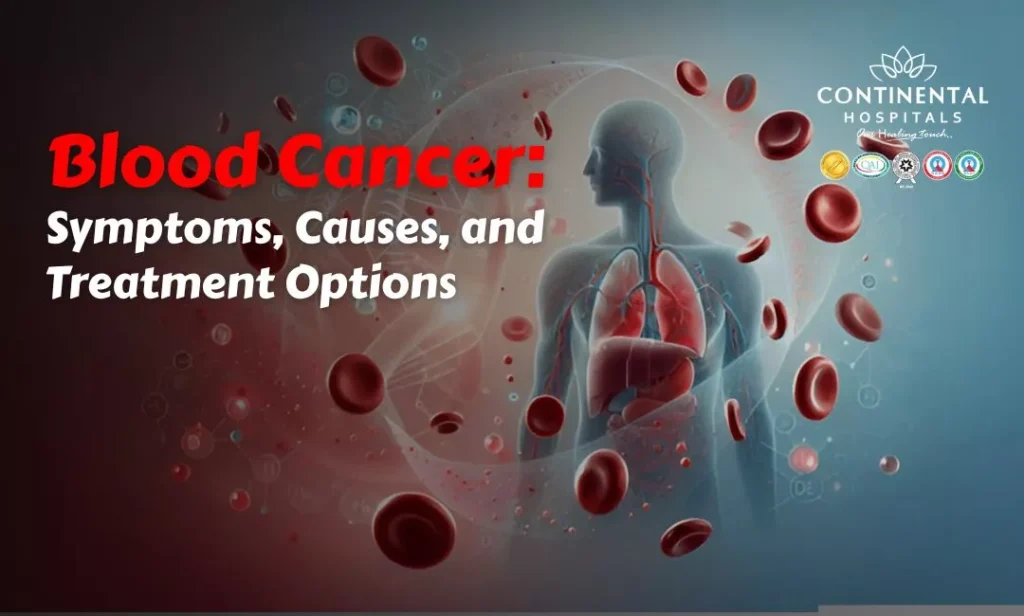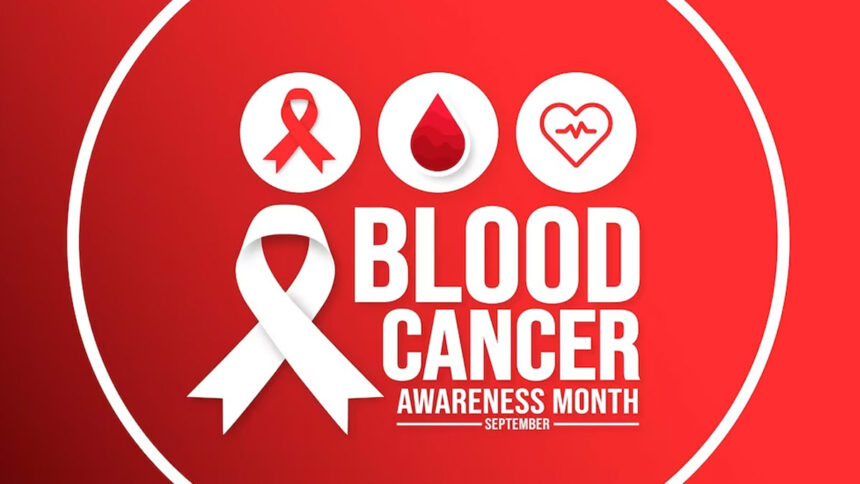EBlood Cancer Awareness: very September, the world unites for Blood Cancer Awareness Month — a time dedicated to spreading knowledge, celebrating survivors, and supporting those fighting leukemia, lymphoma, or myeloma. This month-long global initiative is more than just a campaign; it’s a vital reminder of the importance of early detection, regular screenings, and timely treatment. Hospitals, charities, and support groups across the globe organize events, fundraisers, and awareness drives to educate people about the disease and highlight the importance of community support. Wearing red, sharing survivor stories, or simply having conversations about blood cancer can go a long way in reducing stigma and saving lives.
Blood cancer is not a single disease but a group of malignancies affecting the blood, bone marrow, or lymphatic system. These cancers disrupt the production and function of blood cells, weakening the immune system and making the body vulnerable to infections and other complications. Despite significant advances in medical science, many people still overlook early warning signs, often mistaking them for minor illnesses or age-related fatigue. This lack of awareness can lead to delayed diagnoses, which drastically reduces treatment effectiveness and survival rates.
Experts stress that knowing the early symptoms and risk factors of blood cancer can significantly improve outcomes. Persistent fatigue, frequent infections, unexplained weight loss, prolonged fever, and swollen lymph nodes are red flags that must not be ignored. Early medical intervention — including blood tests, imaging, and biopsies — can help detect the disease in its initial stages, where treatment is more effective and recovery chances are higher. In this article, we break down the essential information about blood cancers, their signs, risk factors, diagnostic procedures, and treatment options, with insights from leading oncologists and hematologists.
What Is Blood Cancer?
Blood cancer refers to a group of malignancies that affect the blood, bone marrow, or lymphatic system, all of which play crucial roles in producing and transporting blood cells. These cancers interfere with the normal growth and function of blood cells, often leading to anemia, immune system suppression, and organ damage.
The Three Major Types of Blood Cancer
- Leukemia:
Affects the blood and bone marrow, causing the body to produce abnormal white blood cells that crowd out healthy ones. - Lymphoma:
Originates in the lymphatic system, which is part of the immune system. It often causes swollen lymph nodes, fever, and weight loss. - Multiple Myeloma:
Affects plasma cells in the bone marrow and can cause bone pain, kidney problems, and increased susceptibility to infections.
Early Signs and Symptoms You Should Never Ignore
Early detection plays a critical role in improving survival rates for blood cancer. According to Dr. Nitin Agarwal, MD-Transfusion Medicine and HOD of Donor Request Management at DKMS Foundation, there are several warning signs that should prompt immediate medical consultation:
- Persistent fatigue that doesn’t improve with rest
- Recurring infections and frequent illnesses
- Unexplained weight loss over a short period
- Continuous fever or night sweats without known causes
- Bone or joint pain
- Swollen lymph nodes in the neck, armpits, or groin
- Prolonged bleeding or bruising easily
These symptoms are often subtle and can mimic other less serious conditions, but when they persist, they should not be dismissed.
Diagnosis: How Blood Cancer Is Detected
Early and accurate diagnosis is key to effective treatment. Doctors use several diagnostic tools to identify and differentiate between various types of blood cancers:
- Complete Blood Count (CBC): Detects abnormal levels of blood cells.
- Peripheral Blood Smear: Examines the shape and size of blood cells under a microscope.
- Bone Marrow Biopsy: Confirms leukemia or myeloma by analyzing bone marrow samples.
- Lymph Node Biopsy: Helps diagnose lymphoma.
- Imaging Tests: CT scans, MRIs, or PET scans detect the spread of cancer.
- Biomarker Studies: Identify specific genetic mutations linked to blood cancers.
Risk Factors and Causes
While the exact cause of blood cancer remains unclear, several risk factors can increase susceptibility:
- Genetic mutations or family history of blood cancer
- Immune system disorders
- Exposure to chemotherapy or radiation therapy in the past
- Chemical exposure, such as benzene
- Lifestyle factors like smoking, obesity, and chronic stress
Experts emphasize that while some risk factors (like genetics) are uncontrollable, others — such as maintaining a healthy weight, avoiding tobacco, and reducing chemical exposure — can significantly lower the risk.

Read about: AIIMS Neurologist Explains Early Signs of Insulin Resistance You Should Never Ignore
Treatment Options: Tailored to the Patient
The treatment approach for blood cancer depends on the type, stage, genetic profile, and overall health of the patient. The most common treatments include:
- Chemotherapy: Uses powerful drugs to kill cancer cells or stop their growth.
- Immunotherapy: Boosts the immune system to help it fight cancer cells.
- Targeted Therapy: Focuses on specific genetic mutations within cancer cells.
- Stem Cell Transplant: Replaces damaged bone marrow with healthy stem cells, offering some patients a potential cure.
- Radiation Therapy: Destroys cancer cells using high-energy radiation.
A multidisciplinary approach — combining lifestyle changes, medical treatment, and supportive care — often yields the best results.
Conclusion
Blood Cancer Awareness Month serves as a powerful reminder that knowledge saves lives. Despite major advances in cancer research and treatment, early detection remains the single most effective way to improve survival rates. Recognizing subtle signs, staying aware of risk factors, and seeking timely medical advice can make a life-changing difference.
Equally important is the need to break the stigma surrounding cancer. Open conversations, support for patients and caregivers, and active participation in awareness initiatives can create a supportive environment for those affected. Every conversation, donation, and awareness event contributes to the fight against blood cancers.
As research continues to evolve, treatments are becoming more personalized and effective. The future of blood cancer care is promising — with better diagnostics, targeted therapies, and innovative treatments offering hope for longer and healthier lives.
This September, let’s commit to spreading awareness, supporting research, and encouraging regular health checkups. Together, we can help more people detect blood cancer early, start treatment promptly, and ultimately, save lives.
Also read: Wall Street Is Reframing Climate Finance as an Energy Security Imperative
Frequently Asked Questions (FAQs)
1. What is the difference between leukemia, lymphoma, and myeloma?
Leukemia primarily affects the blood and bone marrow, causing the uncontrolled growth of abnormal white blood cells. Lymphoma originates in the lymphatic system and affects immune function. Myeloma targets plasma cells in the bone marrow, often causing bone pain and kidney issues. While they all impact the blood, their origins and symptoms vary significantly.
2. Can blood cancer be detected through a routine blood test?
A routine blood test like a Complete Blood Count (CBC) can indicate abnormal blood cell levels, which may signal blood cancer. However, definitive diagnosis often requires additional tests such as bone marrow biopsy, imaging, or genetic analysis to confirm the type and stage of cancer.
3. Are there ways to reduce the risk of developing blood cancer?
While you can’t control genetic factors, you can lower your risk by avoiding tobacco, maintaining a healthy weight, reducing exposure to harmful chemicals, and managing stress. Regular checkups and early screening are essential, especially if you have a family history of cancer.
4. What is the survival rate for blood cancer?
Survival rates vary based on the type and stage of blood cancer, patient age, and overall health. With early detection and modern treatments like targeted therapy and stem cell transplants, many patients achieve remission or long-term disease control.
5. How important is early detection in blood cancer treatment?
Early detection is crucial because it allows for timely intervention, when treatment is often more effective and less aggressive. Patients diagnosed at an early stage typically have better outcomes, higher remission rates, and improved quality of life.
